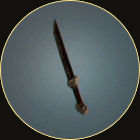

A comparison of the PIXE elemental composition of geological vs. It is shown that they came from the two main obsidian sources, Balata dei Turchi and Lago di Venere, of the Pantelleria Island. The provenance of 37 obsidians from the Kerkennah Islands (central Mediterranean Sea) was determined by PIXE. Le Bourdonnec, François-Xavier Poupeau, Gérard Boussofara, Ridha Obsidians from the Kerkennah Islands (eastern Tunisia) and the PIXE elemental compositions of the Mediterranean peralkaline obsidians Recent source determinations of obsidian artifacts from Tikal indicate (1) a behavioral link between locally-produced prismatic blades of Highland Guatemalan stone and ceremonial incised obsidians and eccentrics, and (2) a Central Mexican origin for a seemingly large portion of Tikal's obsidian projectile points and knives. The potential of these two approaches for cultural reconstruction is greatly extended when they can supplement each other. The obsidian industry of Classic period Tikal, Guatemala, is discussed with regard to geological source determinations and behavioral typology. The combined result of these developments gives obsidian hydration dating an enhanced capacity to be a useful and independent dating systemĮnergy Technology Data Exchange (ETDEWEB) An improved system for calculating the annual effective hydration temperature is presented which gives a better control of micro-environmental temperature in its crucial rate determining role. The dissolution rates of natural obsidians could be useful in considering weathering rates for artificial glasses. By adopting a strategy of measuring hydration in concealed fissures both the weathering rate and the dating of the Papua New Guinea obsidians have been successfully achieved. Hydration rates for key Papua New Guinea obsidians have been determined from long term experimental laboratory exposure and these are used to evaluate the age of obsidians from selected archaeological sites.

004μ per year depending on the site's location and the obsidian source. This follows from the range of calculated surface reduction rates which range between. Figures available for sites in Papua New Guinea indicate that the weathering rate is sufficiently fast to render conventional hydration measurement completely unreliable. Long term weathering of artificial glasses is paralleled by the archaeological problem of determining hydration rates in obsidian artefacts as a means of dating their manufacture. International Nuclear Information System (INIS)įull text: Developments in the nuclear industry have shown that some of the problems related to the glassification of waste for long term storage are centred on the rate of glass weathering in various repositories.


 0 kommentar(er)
0 kommentar(er)
